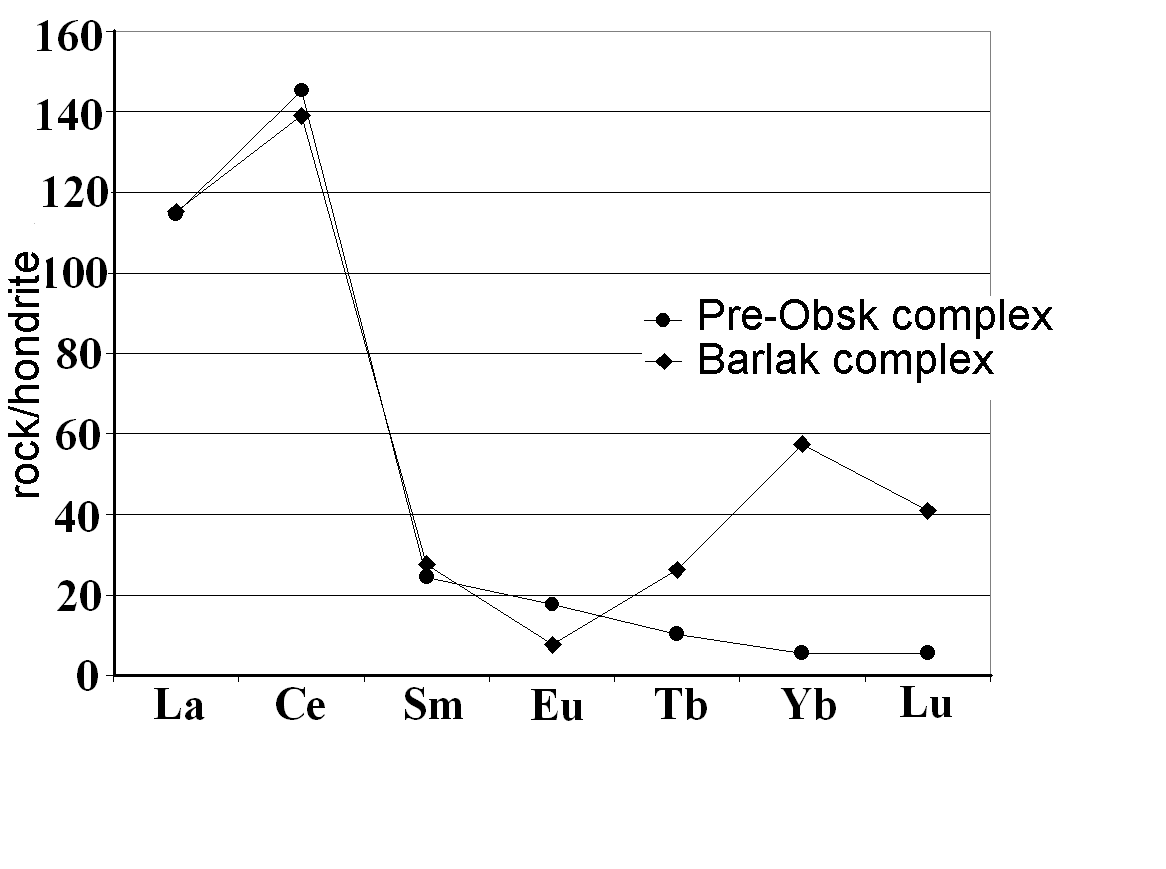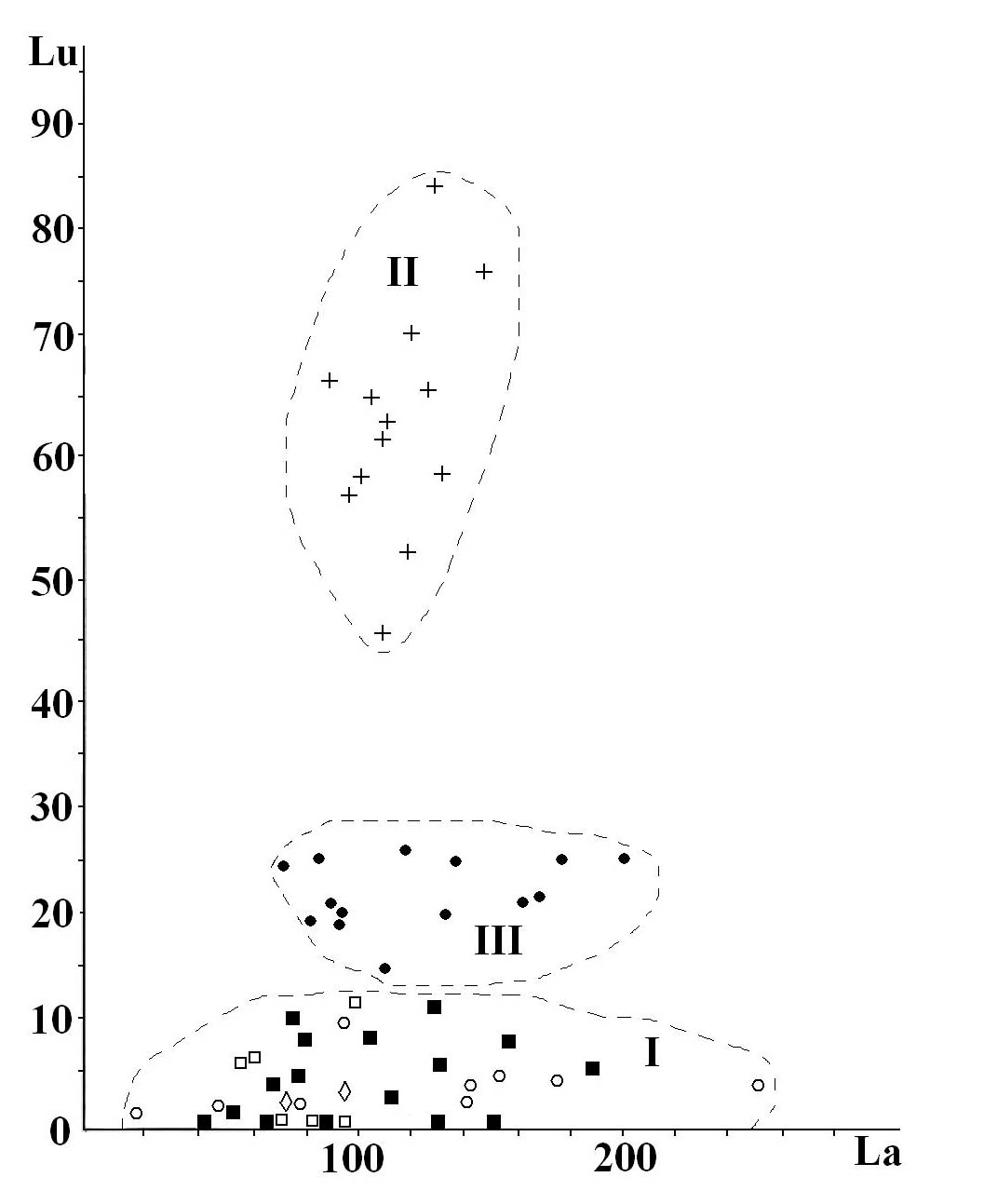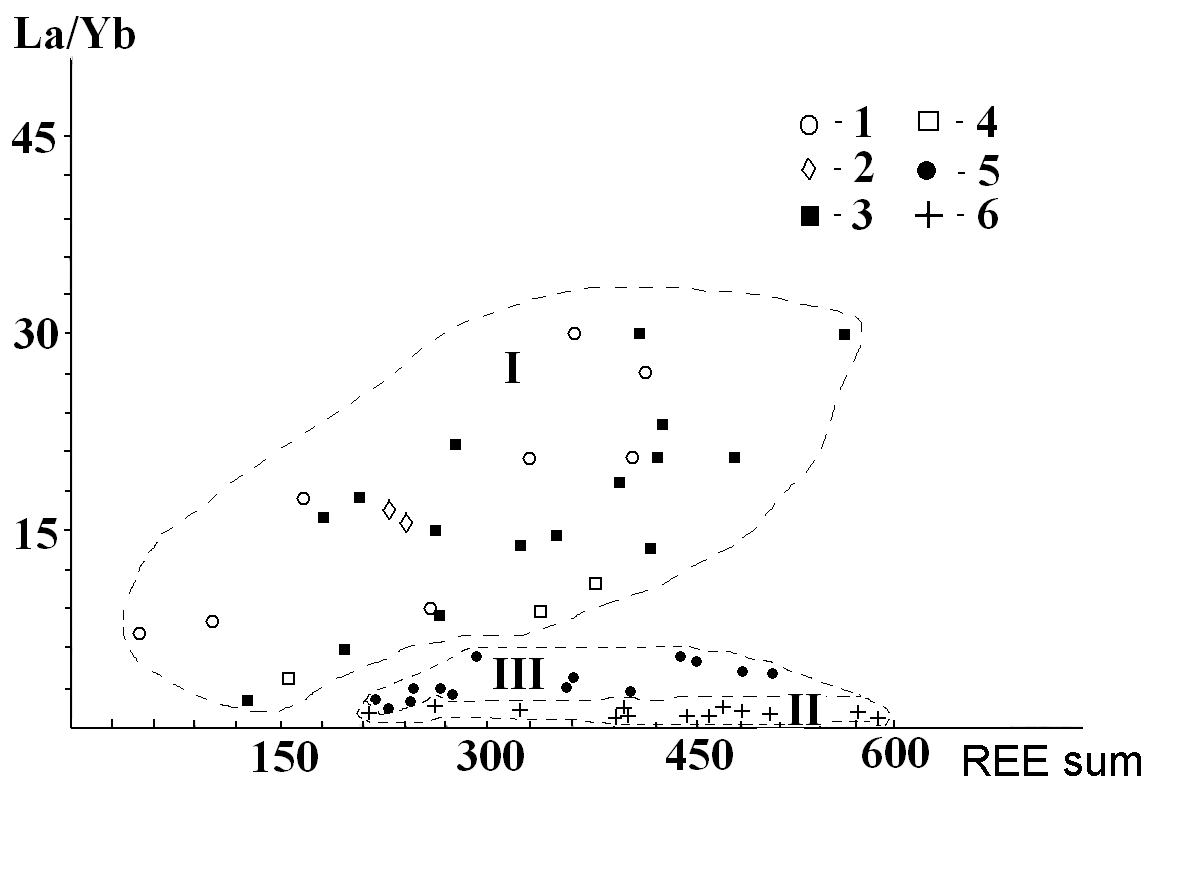|
RARE-EARTH ELEMENT DISTRIBUTION IN GRANITOID MASSIVES OF KOLYVAN-TOMSK FOLD ZONE Tomsk Polytechnical University, Tomsk, Russia, nkonstantin1@rambler.ru
Granitoid massives characterized by rare-metal Sn-Mo-W, golden-ore and polymetallic mineralization are widely spread in the Kulyvan-Tomsk geological folded zone. The problem of granitiod masses and their petrological characteristics is relatively disputable. According to the geological data (Geological structure..., 1999), all granitoid masses are related to the Permian-Triassic Obsk complex with different facies depths. Two distinct complexes were identified: Pre-Obsk P2 – T1 and Barlak T1–2 with approximately similar ages (Sotnikov et al., 1999). The Pre-Obsk complex of granitoids, including Ob massif and granitoid massives, exposed by Novobibeevsk, Borok and Ippodromsk quarries, are S-types formed during geodynamic island-arc development period of Kolyvan-Tomsk folded zone formation due to weakly metamorphized pelite dry melting, which are in its turn, considered to be low temperature melts close to pegmatite eutectic. Metasomatism series which include three stages (iron-magnesian, alkaline – potassium and silicic oriented) formed biotite-porphyry-granites, granosyenite, subalkaline feldspar granites, while in endocontact facies – granodiorites (Novobibeevsk, Borok quarries). Accessory minerals have low content and their distribution is non-uniform not only one massif, but also in different massifs. All rocks include magnetite, ilmenite, zircon, sphene, apatite, almandine, pyrite, chalcopyrite and occasional native ferrite, tin, lead, galena, cinnabar, as well as, single-grained rare-earth minerals – bastnaesite, parisite, monazite, orthite. The Barlak complex leucogranites (exposed by Kolyvan and Mochitshe quarries) formed during geodynamic within-plate formation stage of the type-I. By the geochemical classification (Tauson, 1977), they correspond to the andesite granite group. Post-magmatic iron-magnesian metasomatism has poor development, while alkaline – strong sodium orientation as albitization. These accessory types significantly differ in quantity and composition from their counterparts found in the Pre-Obsk complex. Percentage concentration content includes molybdenite, zircon, apatite, topaz, fluorite, sphene, monazite, as well as native metalloids, rare-earth and rare-metal accessories – xenotime, yttrofluorite, euxenite, tungsten columbite-tantalite in single grains. Magnetite cannot be found in Kolyvan leucogranites. However, it can be found in metasomatic altered Mochitshe leucogranites. The Rare-earth element distribution occurences also reveal the petrogenesis difference of Pre-Obsk and Barlak granitoids (neutron activation method was applied – Nuclear Geochemical Method Laboratory, Tomsk Polytechnical University, Tomsk).The results were as followed: 1. Pre-Obsk complex granitoids are characterized by the absence of negative europium anomaly, while Barlak complex has distinct negative Eu-anomaly (Fig. 1). Pre-Obsk rocks have insignificant heavy rare-earth element content due to their initial low content in remelted rock substratum (Tb, Yb, Lu clarks in pelites are lower than in granites);
Fig. 1.2
REE spectrums of Pre-Obsk and Barlak granitoid complexes. Contents
of REE are normalized by hondrite. 3. According to La/Yb and REE sum ratio, figurative points on the diagram can be grouped into three fields (Fig. 3): I field – random value is Pre-Obsk complex granitoids characterized by REE sum and light lanthanoid content increase. Barlak rocks form two adjacent fields corresponding to Kolyvan rocks (II) and Mochitshe rocks (III), where figurative points of Kolyvan lanthanoid form high REE content field at minimum La/Yb ratio, while Mochitshe granitoids field indicates light lanthanoid accumulation being similar to Pre-Obsk granitoids. Similar three fields are depicted in Fig. 2. This fact can be explained by the light REE redistribution during post-magmatic hydrothermal stage in Mochitshe stock with intensive formation of near vein metasomatite and Pb-Zn sulphide mineralized quartz reefs. Thus, REE distribution in the Pre-Obsk and Barlak granitoid complexes has its own specific peculiarities, and it is considered to be an additional criterion in problem solution of granite rocs petrology in the Kolyvan-Tomsk folded zone.
References Geological structure and deposits of West Siberia (1999) v.I. Novosibirsk. Izd-vo SB RAS, RC of UIGGM. 229p. (in Russian) Roslyakov N.A., Shcherbakov Yu.G., Alabin L.V. et al. (2001) Minerageny of the Salair and Kolyvan-Tomsk fold zone conjugated area. Novosibirsk. Izd-vo of SB RAS, “Geo” branch. 243p. (in Russian) Sotnikov V.M., Fedoseev G.S., Kungurtsev L.V. et al. (1999) Geodynamics, magmatism and metallogeny of the Kolyvan-Tomsk fold zone. Novosibirsk. Izd-vo of SB RAS, RC of UIGGM, 227p. (in Russian) Tauson L.V. (1977) Geochemical types and potential ore-bearing of granitoids. M. Nauka. 230p. (in Russian)
|


